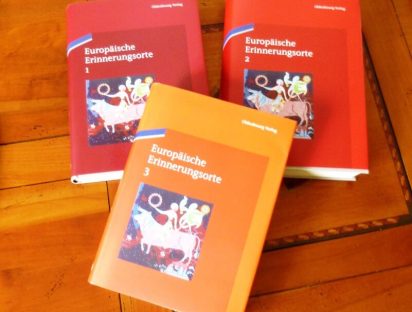It is not every day that a researcher has the opportunity to be the eye-witness of a nation in the making.
Sunday evening 7 June 2015, at the intersection between Avinguda de Sarria and Avinguda Josep Taradellas in the centre of Barcelona, was such a moment. Bumping into a joyful crowd that was waiting for the victory parade of their Champions League heroes in an open-deck bus, we had over two hours to improvise an in-depth session of participant observation.
From the reports in the following day’s newspapers, it appears that our ‘field work sample population’ was perfectly representative of the entire city, which for the occasion metamorphosed into a very, very long ‘Fanmeile’. As is usual nowadays on such Fanmeilen, the patiently waiting crowd was entertained with music from loudspeakers placed at regular intervals along the itinerary of the bus. Next to the DJ, a nice lady was handing out Barça flags to those (a minority) who were not already equipped with garment or objects in the club’s colours, while an equally nice security man was scratching his head somewhat anxiously given the impressive number of persons sitting and standing in the middle of the street.
The crowd had several distinctive features: it was fully trans-generational, encompassing every single age group of the city; it had a striking gender parity within each of these age groups; and it was very visibly ethnically inclusive, with a rather significant percentage of individuals from various migrant origins. Every now and then the DJ played ‘El Cant del Barça’, the official anthem of FC Barcelona, the lyrics of which are not really on a higher level of poetic sophistication than what can be heard in other stadia, but which seems to be mandatory learning content in primary education, judging from the degree of familiarity shown by the schoolchildren.
The latter were easy to observe since the youngest among them had been placed on the garbage container in order to give them a good view on the bus (as shown by my little photo gallery). They were, of course, excited, and while not all of them were necessarily understanding what exactly was being celebrated, they were certainly all intuitively getting the point that this was an exceptional moment, a kind of cheerful, but solemn ritual allowing individual persons to publicly show their belonging and obedience to a larger social group. In other words: this was socialisation at work. Right before our eyes, kids from various backgrounds were being turned into little Catalans. For life, probably.
The composition of the public, the sheer size of the crowd, and the Catalan flags hanging from every second balcony clearly gave evidence to the fact that the clichéd Barça motto ‘Més que un club’ is not an usurpation. As a matter of fact, this is not a club at all. It’s a national team. This impression is confirmed when you walk into the Barça museum, where you have to go past a poster that enumerates ‘Catalan Identity. Universality. Social Commitment. Democracy’ as the pillars of the Barça identity. It sounds like a political platform.
The evening reminded me of two very good book chapters on FC Barcelona. The first one figures in Simon Kuper‘s wonderful Football against the Enemy, written in the mid-1990s, at a moment when ‘every day shop signs in Spanish went down and were replaced by Catalan signs’. For Simon Kuper, Catalan nationalism was all about symbolic recognition, not concrete political independance: ‘The Catalans do not want a state of their own, but they want something vaguer than that, symbols to prove they are a separate people’, and Barça is ‘the symbol that this nation needs in lieu of a state’.
Certainly not a wrong perception twenty years ago, but it would be difficult to write the same thing today, as it would no longer sound reasonable to qualify Barça as an ‘under-performing’ club. Ten years later, Franklin Foer also dedicated a chapter to Barça nationalism in How Soccer Explains the World. For him Catalan nationalism is already much more tangible, but it appears to him as an open and inclusive nationalism, like the liberating idea introduced by the French Revolution before it was perverted (mainly by the German romantics) into what then become no doubt the most powerful ideology of the 19th and 20th century.
Foer’s enthusiastic vision of Catalan nationalism is not naive, but it is shortsighted: proto-nationalism that is based on an existing and practiced language and on strong cultural self-awareness, and that may at the same time credibly claim to have undergone a long period of oppression, almost naturally appears as a sympathetic cause. It’s when independence has been reached and a newly existing state is charged with protecting borders, redistributing resources, and defending so-called national interests when things have a tendency to turn nasty.
Producing new Catalans with the help of cultural symbols is not too complicated. Especially if you can use the powerful emotions that football is capable of providing. But maintaining openness, inclusiveness and ethnic diversity in a future independent state will be the real test. A slightly more demanding one than a Champions League final.



